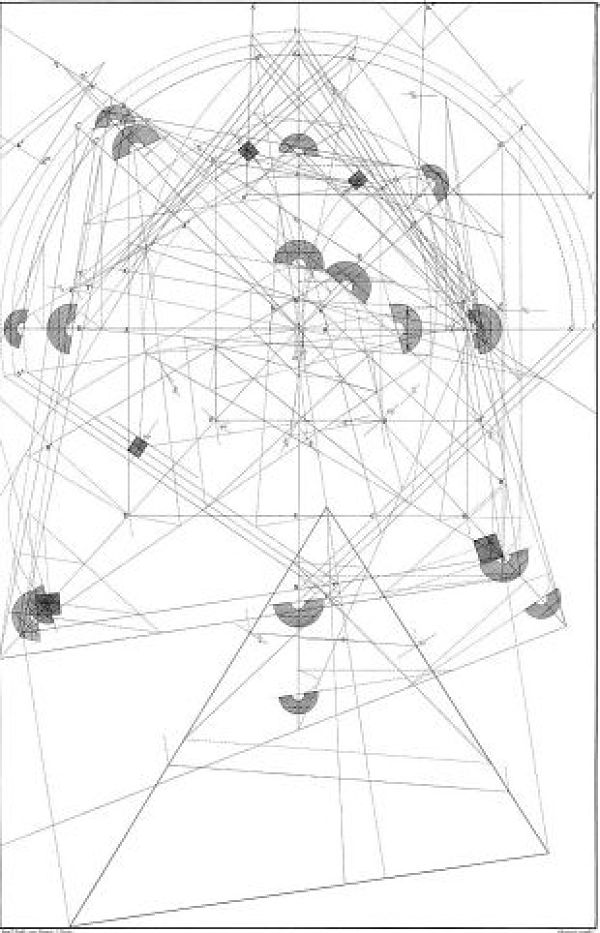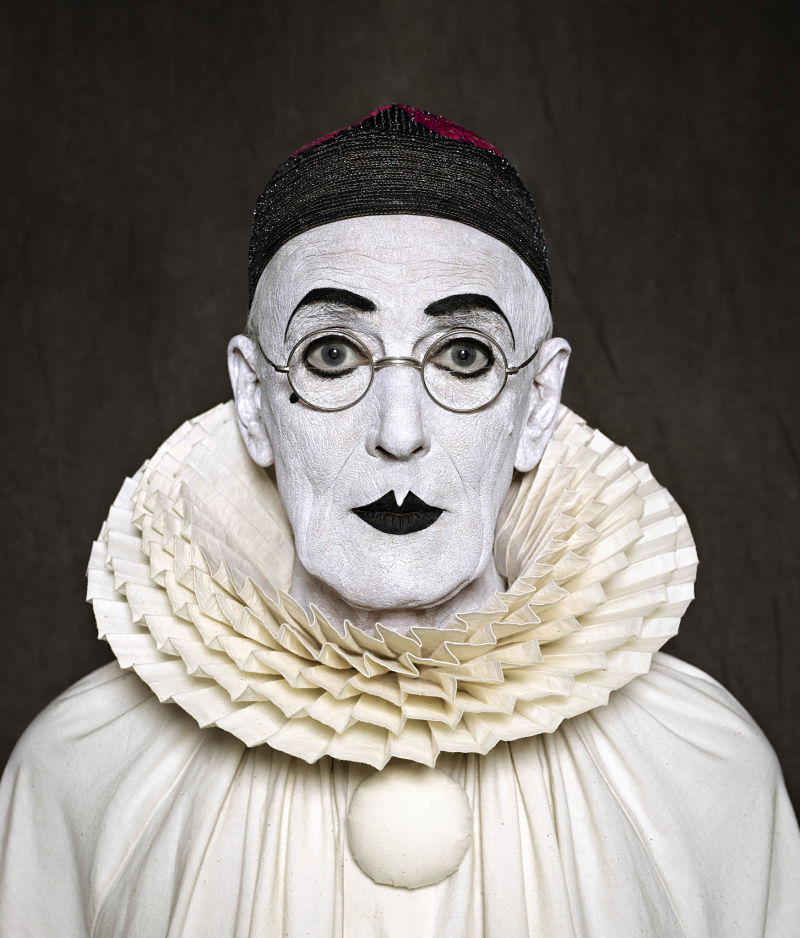Canadian artist Arnaud Maggs’ artistic legacy continues to influence and inspire Toronto this month with the premiere of Spring & Arnaud by Hot Docs and the opening of his Scotiabank Photography Award (SPA) exhibition at the Ryerson Image Centre (RIC). During the months before his passing, Maggs was self-curating this exhibition at the RIC which contains four handpicked works surrounding themes of mortality, collecting, and portraiture.
 Arnaud Maggs, André Kertész, 144 Views, detail, 1980 © Estate of Arnaud Maggs, Courtesy of Susan Hobbs Gallery
Arnaud Maggs, André Kertész, 144 Views, detail, 1980 © Estate of Arnaud Maggs, Courtesy of Susan Hobbs Gallery
Upon entering the exhibition, a monumental display of André Kertész: 144 Views (1980) astounds the senses. Assembled into a large-scale grid installation that is synonymous with Maggs’ practice, this never before exhibited work grants a glimpse into the artist’s working process with the sequential portrait. Maggs’ persistence and attention to detail is demonstrated as Kertész gradually turns and lets his guard down. In certain images, Kertész appears to have fallen asleep on camera and in others he smiles as if he had just heard a witty joke. Although Kertész’s appearance and personality is portrayed in a multi-faceted light that appears to capture every facial twitch, every freckle, and every hair, Maggs’ unyielding focus towards his subject does not shift, highlighting both his and Kertész’s character as photographers.
 Arnaud Maggs, Kunstakademie, detail, 1980 © Estate of Arnaud Maggs, Courtesy of Susan Hobbs Gallery
Arnaud Maggs, Kunstakademie, detail, 1980 © Estate of Arnaud Maggs, Courtesy of Susan Hobbs Gallery
In the main gallery space, two long works contrast each other on opposite sides of the room with a partial wall extruding from the center. Kunstakademie (1980) is a series of 148 black-and-white frontal and profile-view portraits of students at the Staatliche Kunstakademie in Düsseldorf, Germany. In this piece, Maggs establishes a timeless quality through social connectivity. Although this group may have played a part in fabricating the history of conceptual art, Maggs portrays each individual in a humanizing light that exceeds their historical relevancy. Each individual is highly reminiscent of everyday people that one may have known, passed, or briefly encountered. In many cases, it is hard to not fall in love with the individuals that Maggs has chosen because their gaze towards the viewer is so intimately seductive, yet distanced enough to maintain intriguing.
 Arnaud Maggs, The Dada Portraits: Marcel Duchamp, detail, 2010 © Estate of Arnaud Maggs, Courtesy of Susan Hobbs Gallery
Arnaud Maggs, The Dada Portraits: Marcel Duchamp, detail, 2010 © Estate of Arnaud Maggs, Courtesy of Susan Hobbs Gallery
At first glance, The Dada Portraits (2010) appears to be representational portraits of seminal Dada artists. In actuality, they are based on architectural drawings of staircases from 1850. The comparison between this piece and Kunstakademie (1980) is quite curious. In one, Maggs creates the impression that mug shots of strangers possess the capability to generate an intimate connection, while in the other, Maggs defaces and defamilarizes the famous. By using architectural lines and shapes along with names, The Dada Portraits evokes presumptions towards the lesser known names, and reiterates the personalities of the more popular artists.
 Arnaud Maggs, After Nadar: Pierrot Turning, detail, 2012 © Estate of Arnaud Maggs, Courtesy of Susan Hobbs Gallery
Arnaud Maggs, After Nadar: Pierrot Turning, detail, 2012 © Estate of Arnaud Maggs, Courtesy of Susan Hobbs Gallery
The final work in the exhibition comes as a surprise behind the wall from the center of the space. After Nadar: Pierrot Turning (2012) is part of the larger After Nadar series of self-portraits. In particular, this series alludes to a Nadar self-portrait from 1864 and Charles Deburau the mime. Maggs once commented on another image in the larger series which depicts himself holding a black banded envelope by confidently stating, “It is me playing with death.” Perhaps this is why After Nadar Pierrot Turning is such a difficult piece to confront. During my first encounter with this work, it was difficult to emphasize with Maggs because unlike his more romantic pieces, here his assertiveness is intimating. The other three works in the exhibition feature delicate frames, ivory backgrounds, and stark subjects. The visual elements of this piece are the exact opposite of the others with thick black frames, a black velvet backdrop, and the artist himself in costume as Pierrot. Maggs applied his meticulous nature to document and collect towards himself, pirouetting for the camera just many of his own subjects had done for him.
The work is morbidly optimistic as Maggs boldly stares ahead without any hesitation or fear in his expression. Yet at the same time, although we see all 360 degrees of Maggs, the work still possesses a hint of coyness and mystery. Firstly, Maggs is in costume wearing layers of caked makeup and secondly, the camera focused on the details of his face and his rounded spectacles slightly obscure the focus of his eyes. As the eyes are often considered the window into one’s soul, Maggs maintains a veil of playful secrecy and demonstrates that nothing is as clear as it seems. One of Maggs’ unique talents was photographing individuals without dissolving their mystery.
This exhibition offers insight towards Maggs’ adoption of photography as an artistic tool to document people and grants a glimpse of the photographer himself.
The exhibition runs till June 2, 2013 at the Ryerson Image Centre.
*Thanks for Ryerson Image Centre Docent Tyler Webb
Shellie Zhang
